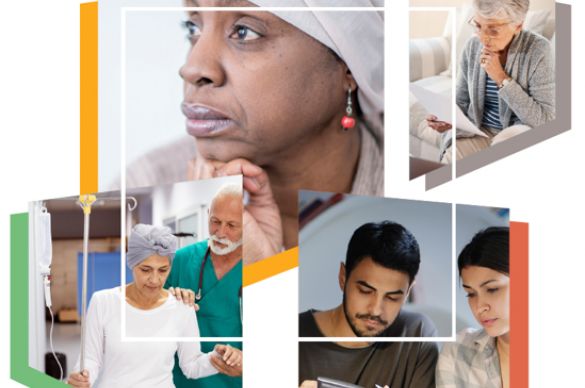In February, we celebrated the substantial contributions African Americans have made to the American Cancer Society and American Cancer Society Cancer Action Network (ACS CAN). Throughout the year at the Society and ACS CAN, we not only celebrate our diversity and heritage, but also work to reduce the pain and suffering of cancer in all communities, for all people. ACS CAN does this by supporting public policies that ensure all people have access to quality, affordable health care and preventive screenings; are able to breathe smoke-free air; and working to ensure that medical research is inclusive. As the Society's recently released Cancer Facts and Figures for African Americans 2016-2018 reported, the disparity in cancer death rates between black and whites has narrowed for all cancers combined in men and women over the past two decades. Despite this progress, there is still work to do.
During a presentation to the Society and ACS CAN on the state of health and wellness in the African American community, Dr. Harold P. Freeman, former Society National Board President and founder of the Harold P. Freeman Patient Navigation Institute, shared his thoughts on reducing disparities and the role of patient navigation. Dr. Freeman is widely recognized as the father of patient navigation, and his work inspired the federal patient navigator program legislation that ACS CAN successfully advocated for more than 10 years ago. I'm grateful to him for sharing some of his remarks below.
When I was a young boy growing up in segregated Washington, D.C., I experienced racial prejudice first hand. When I was 13 years old, my father passed away from cancer. Later, I was fortunate to have the opportunity to become a physician and to train as a cancer surgeon at Memorial Sloan Kettering in New York. The narrative of my life is what led me to choose to provide surgical care in Harlem for decades beginning in 1967.
Poverty, culture and social injustice are principal causes of health disparities, and African Americans are disproportionately poor and less likely to have adequate insurance coverage. People who are poor and uninsured tend to receive lower quality health care and often are diagnosed and treated too late to be cured. In fact, research now shows that the uninsured are more than four times as likely as those with health coverage to be diagnosed with advanced-stage breast cancer. In my early experience in Harlem, we saw many uninsured black women coming into the breast clinic with very advanced-stage breast cancer. It's one thing to know these disparities exist; but it's another thing to find ways to eliminate these disparities through timely delivery of quality care for all individuals irrespective of their ability to pay. I struggled with the question how to help these women in Harlem, and concluded that patient navigation provides one effective remedy.
Over the years, the Society has invested in addressing these challenges through conferences and research focused specifically on cancer among African-Americans and other minorities. In 1989, as president of the Society, I led the organization's National Hearings on Cancer in the Poor in seven American cities, with people came from all 50 states to share their experience of confront cancer while being poor. These hearings found that poor people face significant barriers when they attempt to seek diagnosis and treatment of cancer; they often do not even seek care if they cannot afford it; and they experience more pain and suffering as a result of advanced-stage diagnosis. These findings were reported to the federal government at that time and led to the development of an evidence-based intervention to address cancer disparities, known as patient navigation.
The first Patient Navigation program was conceived and initiated in 1990 at Harlem Hospital Center, supported by a grant from the Society. The program made navigators available to assist patients and their families beginning at the point of an abnormal finding, such as a lump in the breast or other abnormal screening result, to ensure that the patient moved in a timely manner from finding, to diagnosis and through treatment. Before interventions, the five-year breast cancer survival rate in Harlem was 39 percent. After the interventions of patient navigation ensured that patients and their families had adequate support to navigate the health care system, the five-year survival rate increased to 70 percent.
The Harlem patient navigation program provided the model for the Patient Navigator Outreach and Chronic Disease Prevention Act of 2005. ACS CAN supported this legislation and the Society assisted in expanding navigation services nationwide. The Affordable Care Act has also provided insurance for more than 17 million previously uninsured individuals, and requires that states utilize patient navigators to facilitate access to health insurance coverage for uninsured individuals.
I've had the privilege of being a cancer surgeon in Harlem for more than 40 years. This experience led to the realization that there is a critical window of opportunity to save lives from cancer that exists between the point of an initial suspicious finding and the resolution of the finding by timely diagnosis and treatment.
No person in America with cancer should go untreated, experience delays in diagnosis and treatment that jeopardize survival, or be bankrupted by inability to pay for treatment. People should not die because they are poor, black or uninsured. This is more than a medical and scientific issue. This is a moral issue.
The Society and ACS CAN have played a critical role in the advancement of patient navigation, and we must continue to work together to help all patients navigate a complex health care system to achieve our goal of reducing death and suffering from cancer in all communities.

